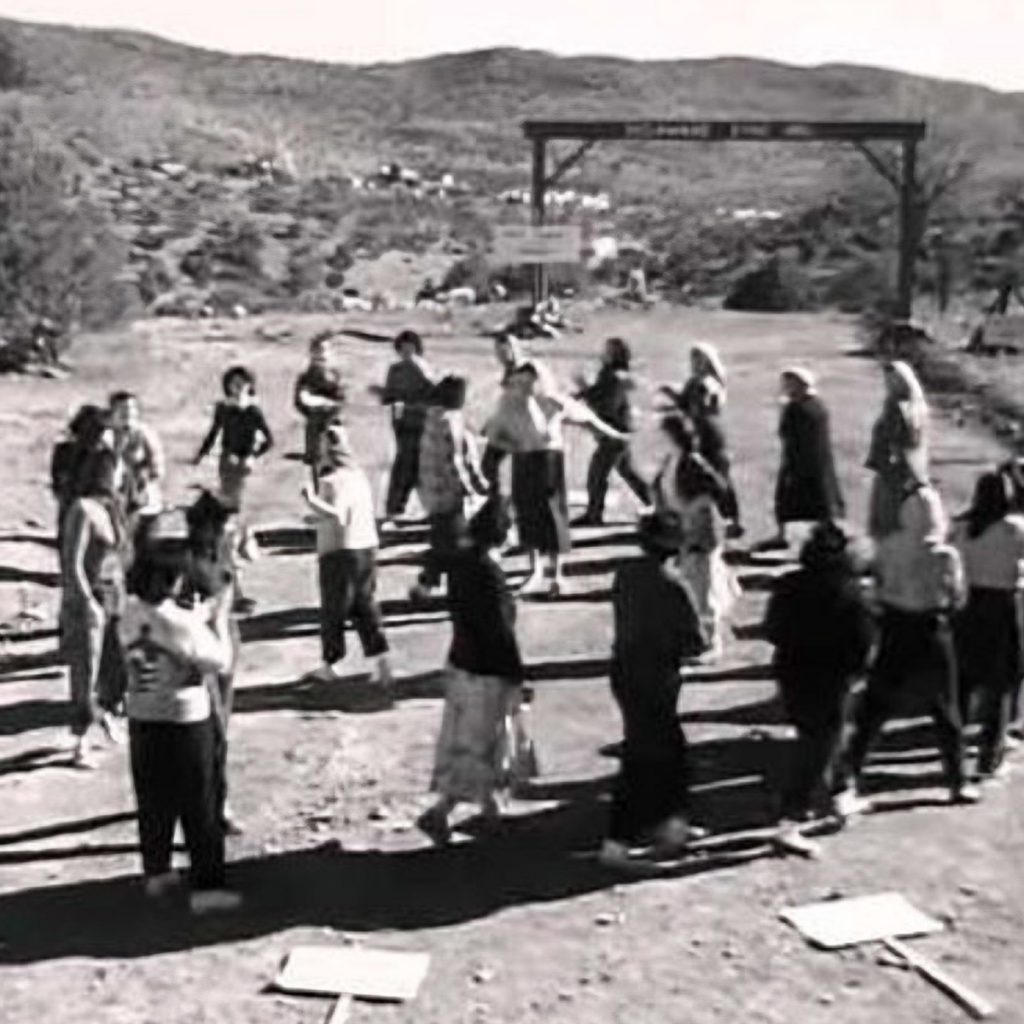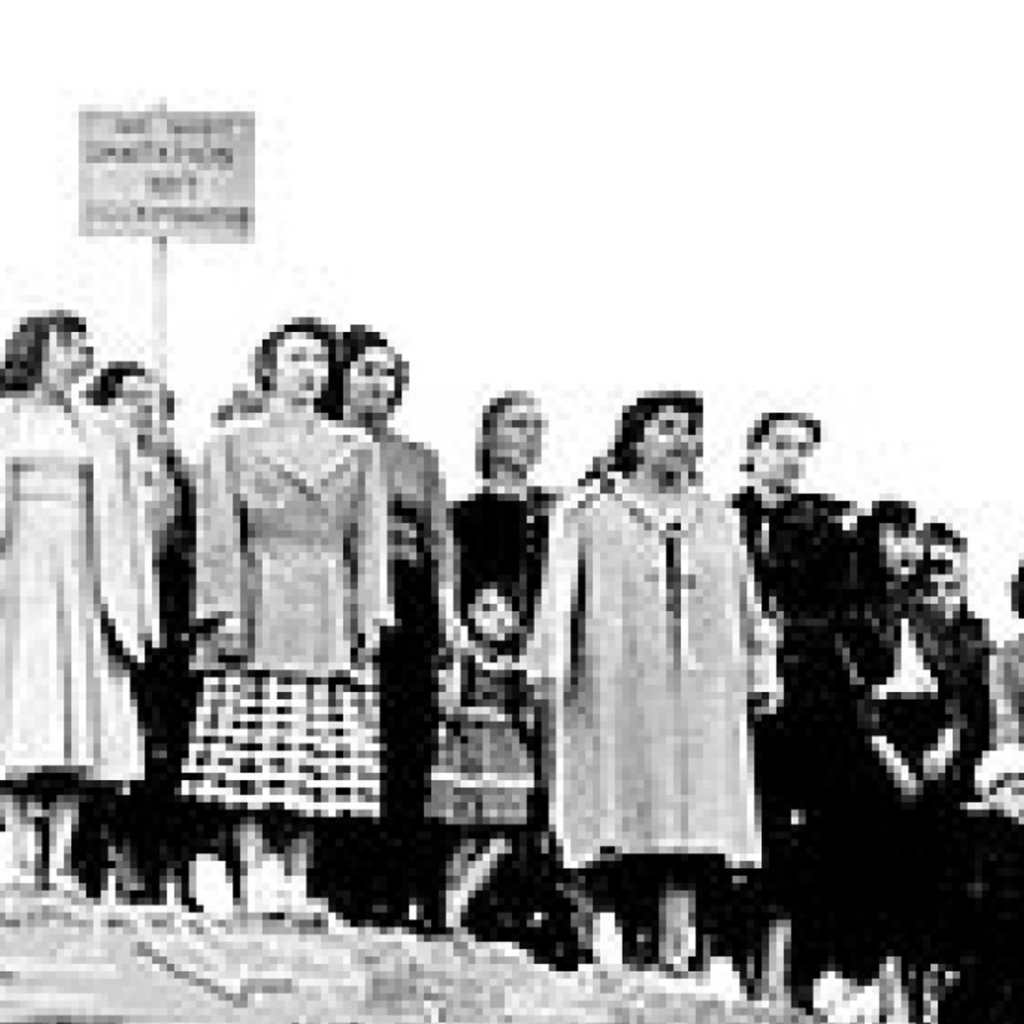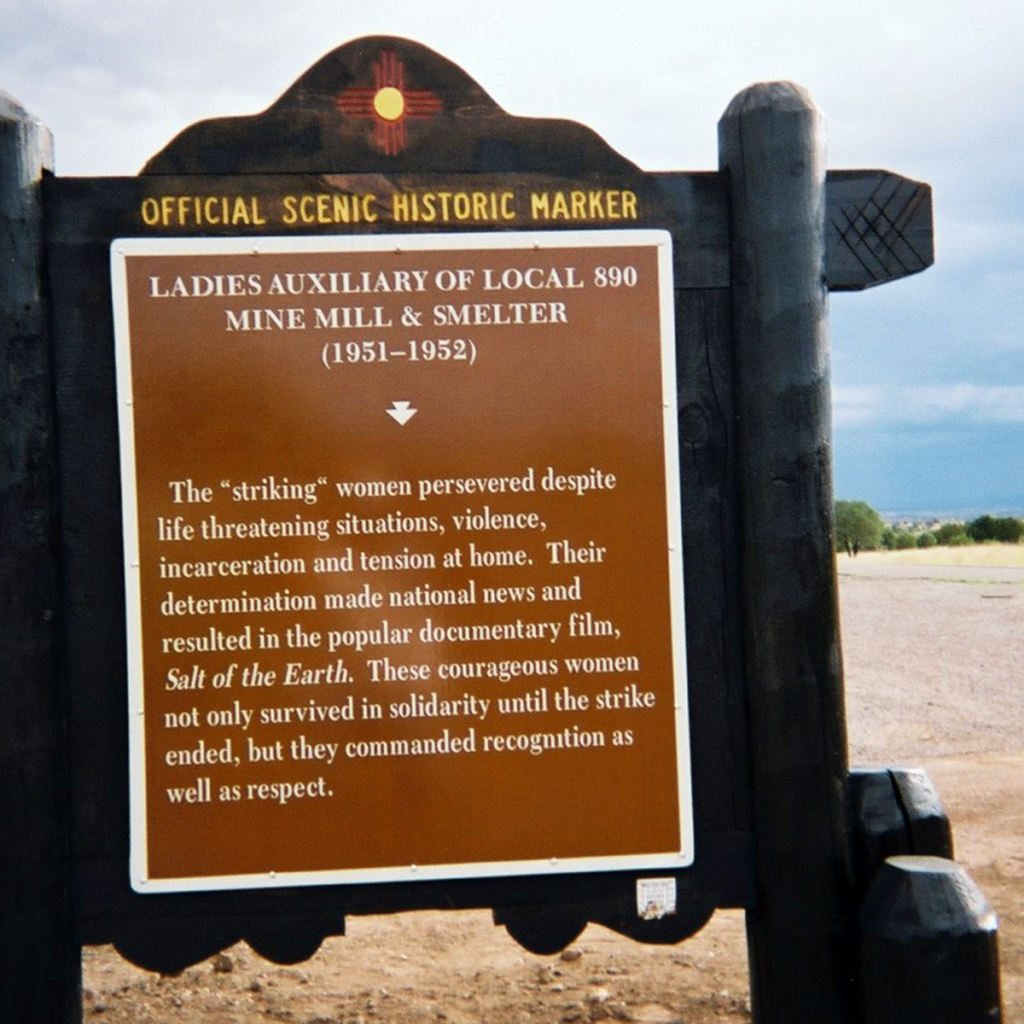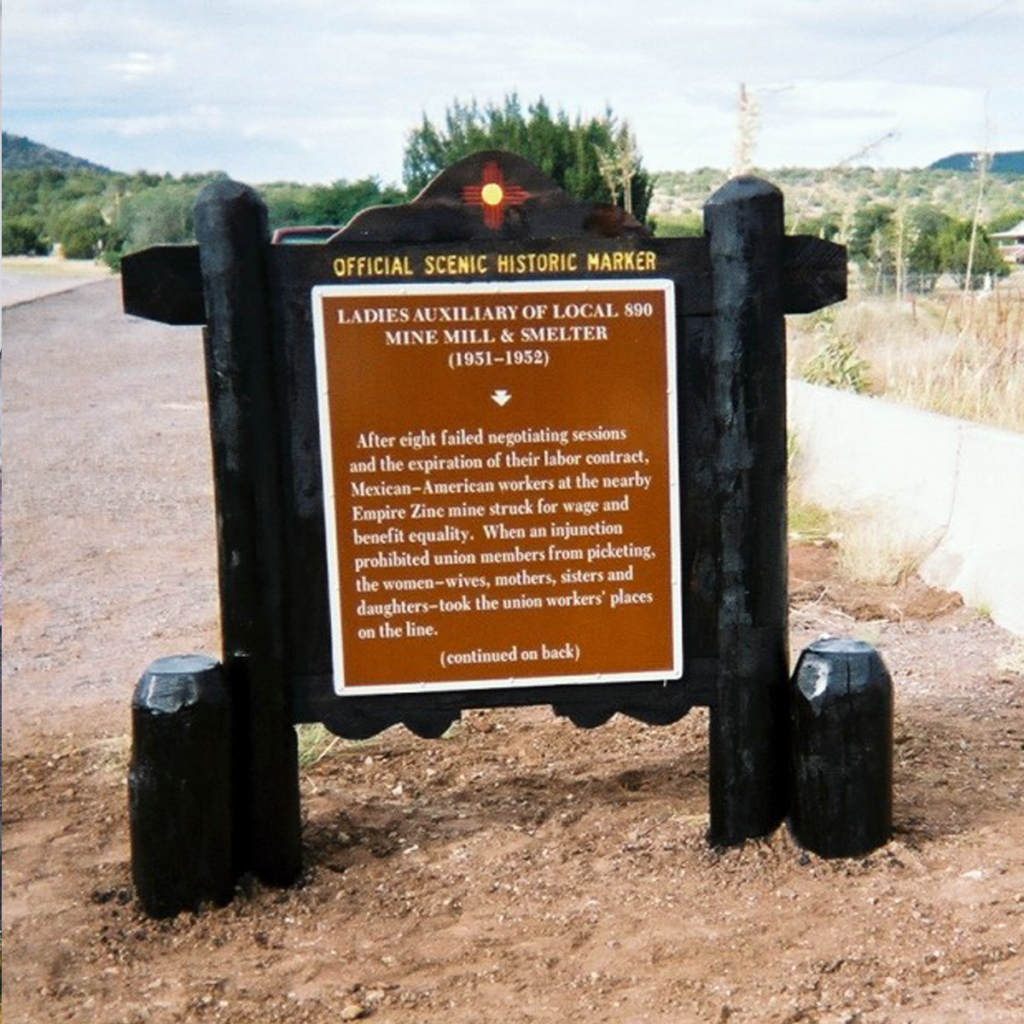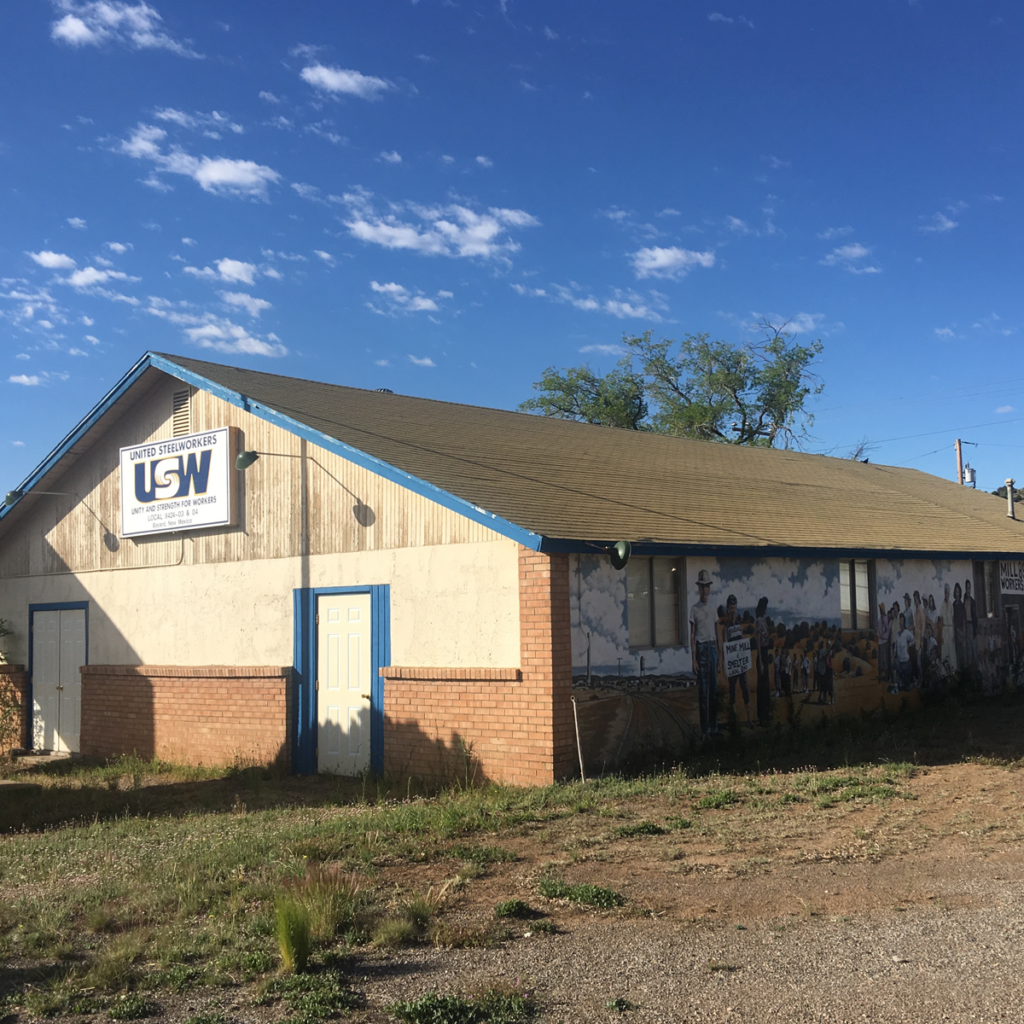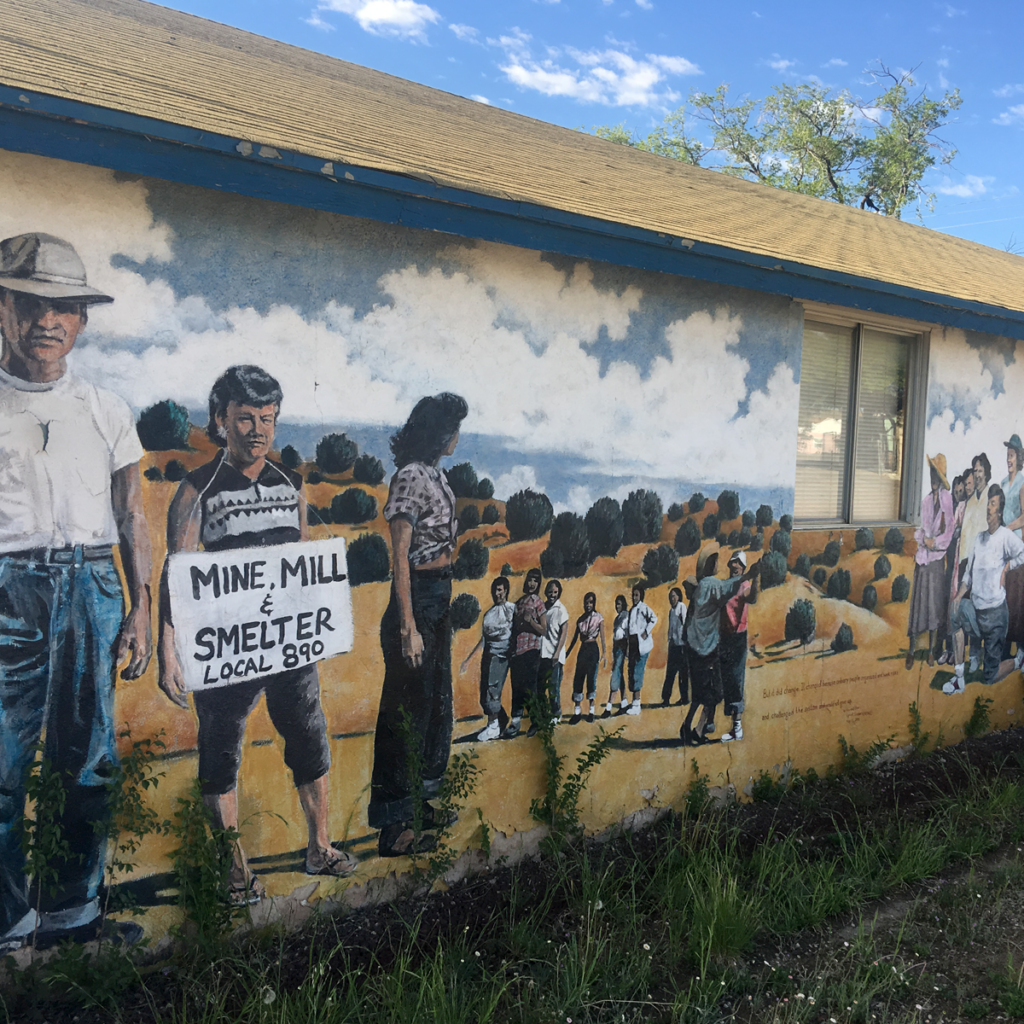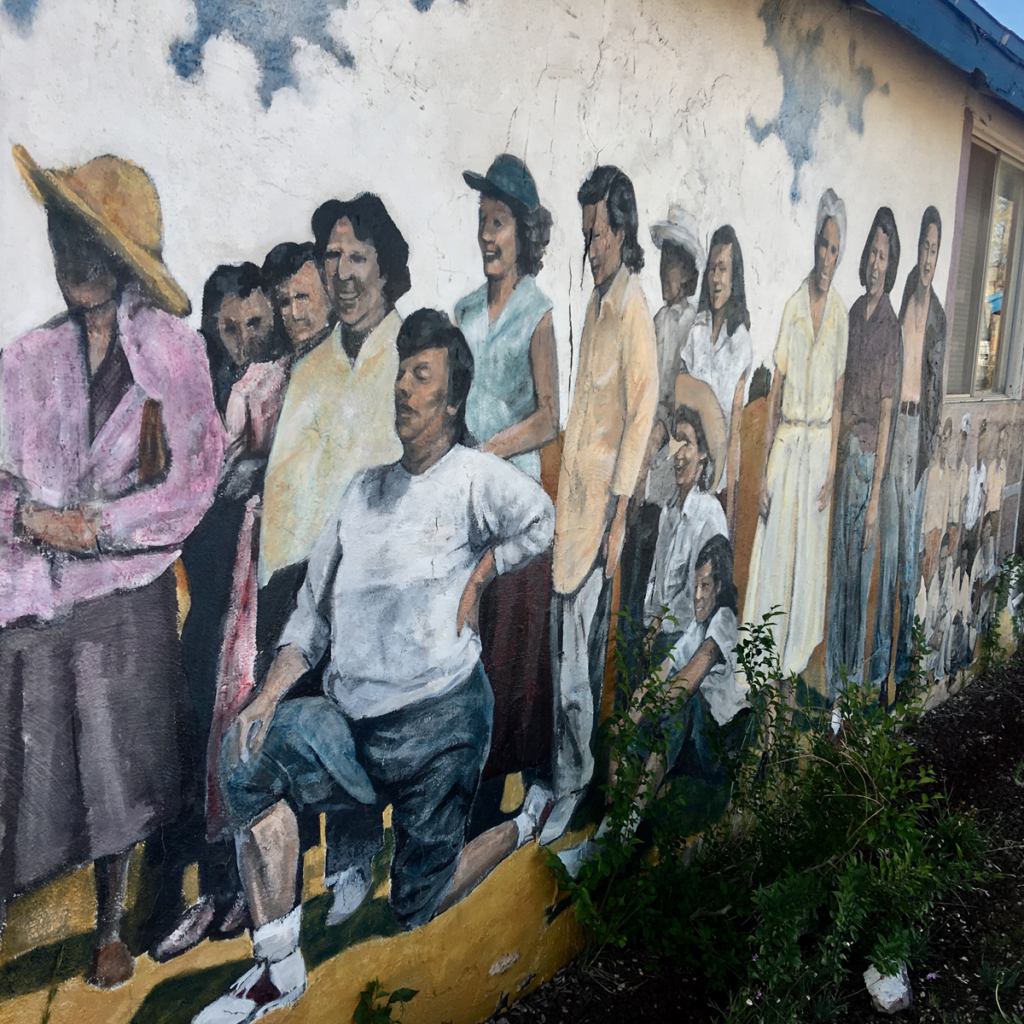Scene from “Salt of the Earth”: Ladies Auxiliary of Local 890 standing on the picket line.
Ladies Auxiliary of Local 890
1951 - 1952
Grant County
When a judge prohibited miners from impeding strike breakers, their mothers, wives, sisters, and daughters stood on the picket lines, risking their lives for equal pay and work conditions. The Ladies Auxiliary 890 attracted national headlines and inspired a documentary, Salt of the Earth.
In the foothills of Pinos Altos, in the small town of Hanover by Silver City, Mexican-American miners walked out to protest unfair working conditions, initiating a strike that lasted from October of 1950 to January of 1952. The Ladies Auxiliary 890 is rightly credited with the successful outcome of the strike.
At the request of the company’s lawyers, a judge granted a temporary restraining order that prohibited men on the picket lines from impeding strike breakers in any way, an action that would likely have defeated the strike. In response, mothers, wives, sisters, and daughters of the miners agreed to take the place of the men on the picket lines, risking their lives to fight for pay and work conditions on par with their white peers. The subsequent threats, harassment, arrests, and violence aimed at the women attracted national headlines and inspired a documentary, Salt of the Earth.
Before their contract expired at the end of September 1950, the Local 890 of the International Union of Mine, Mill, and Smelter Workers, called Mine-Mill for short, participated in eight negotiating sessions. The miners, all Mexican-American men who worked underground for longer hours and less pay than their majority white counterparts, could not win one concession from the company. Empire Zinc refused to discuss any of the miners’ proposals and offered none of their own. The miners had to suffer separate wages, payroll lines, bathroom facilities, and housing—the latter of which did not have indoor plumbing. Their above ground brethren, mostly white Anglos, had plumbing, shorter hours, and better pay—not to mention safer working conditions. When governor Edwin Mechem offered to mediate, the miners agreed but the company refused. When the contract expired, the miners defied both the Empire Zinc Corporation and Grant County Government and walked out, finally resorting to the strike to achieve their goals.
The county government, sheriff’s department, and local newspapers—colluding with the company—eventually opposed the strike, often for clearly racial motivations. For example, Todd Ely of the Daily Express wrote, “… if you have dark skin, belong to a minority religious, political, or racial group, look no further for an excuse for your ill success.” In a separate editorial, he added that Mexico was “poverty stricken” because it lost its identity “in a mestizo melting pot” that lowered its society “to a point little above that of the swarming aborigines.”
After almost sixteen months, the strike was settled when both sides made concessions. The settlement and subsequent improvements, including indoor plumbing for all company workers, are notable advancements in New Mexico history, but the role of the women, the “Ladies Auxiliary 890,” is a truly singular and remarkable episode in New Mexico’s labor history.
Commanding recognition and respect as brave saviors of a strike on the verge of defeat, the Ladies Auxiliary 890 also became a catalyst for accelerated evolution of a civil rights movement for Mexican-Americans in the area. Their actions helped establish a cohesive swing vote that gave Mexican-Americans a political voice for the first time in the county. The success of the strike opened up the union to give its Mexican-American members more upward mobility. And most fundamentally, conditions for Mexican-American miners improved significantly, benefiting the miners, the women who stood on the picket lines for them, and ultimately their extended families and communities.
WOMEN INVOLVED IN THE SALT OF THE EARTH STRIKE 1950-1952
Clorinda Alderette*
Vicentita Alvarado
Camarina Andazola*
Maria Arciero
Rosilia Armijo*
Geneva Altamirano
Genova Baca
Angie Barela*
Cecilia Barela (15 years old)
Delfina Barela*
Catalina Barreras*
Eva Becerra* (Vicente)
Mary Becerra
Dolores Bencomo*
Inez Bencomo
Josephine Campbell*
Rachel Carbajal
Minerva Carrillo*
Virginia Chacon*
Katie Chapin*
Aurora Chavez*
Daria Chavez
Dorothy Chavez
Mary Chavez*
Altagracia Cordova*
Mary Diaz*
Ramona Diaz*
Lupe Elizalde (teenager)
Consuelo Encandon*
Consuelo Esqueda*
Aurora Espinosa
Beatrice Espinosa*
Juanita Fethel (14 years old)
Josie Flores
Emma Gallegos
Sra. Garza
Amelia Gomez
Rafaela Gomez*
Francisca Gonzales
Stella Gutierrez
Josefina Hernandez*
Vicenta Hernandez (Chenta)
Bersabe Iguado
Rachel Juarez (14)
Virginia Jencks*
Dolores Jimenez (Lola)
Josephine Kirker*
Esther Kirker
Nicanora Lopez
Celestino Lucero
Dora Lucero*
Caroline Martinez
Clorinda Martinez (16 years old)
Consuelo Martinez
Lou Martinez
Lupe Martinez (13 years old)*
Mrs. Mike Martinez
Carmelita Mendoza
Josephine Marrufo
Elvira Molano (Vera)
Carmen Molina*
Celia Molina*
Amelia Montoya*
Ida Montoya
Lucy Montoya*
Gloria Montoya
Grace Montoya (14 years old)
Beatrice Morales*
Guadalupe Morales* Isabel Moreno*
Jennie Muñoz*
Virginia Muñoz*
Belen Nevarez
Treminia Nevarez* (Trini)
Josefa Ojinaga*
Mary Perez
Feliciana Peru*
Mrs. Enrique Polanco
Mrs. Jesus Ramirez (Marianna?)
Antonia Rivera
Maria Rodriguez*
Olivia Rodriguez*
Sabinita Romero
Rita Ruiz (15 years old)
Socorro Saborio
Sabina Salazar
Lourdes Sedillos*
Jeannie Sierra
Juana Sierra
Elena Tafoya
Mercedes Telles*
Anita Torrez
Elijosa Udero
Consuelo Torres*
Belen Vallejas*
Beatrice Vasquez
Vega sisters
Braulia Velasquez*
Antonia Villalobos
Henrietta Williams
Maria Ybarra 101
*One of the 53 arrested and the 45 charged with unlawful assembly June 18, 1951.
List courtesy of Terry Humble.
Sources:
Museum Director and Archivist, Susan Berry; co-author of Built to Last: An Architectural History of Silver City New Mexico. The Silver City Museum.
Directions:
Ladies Auxiliary of Local 890
Grant County
Activist | Community leader |
Statehood (1912 - present) |
Southwest



